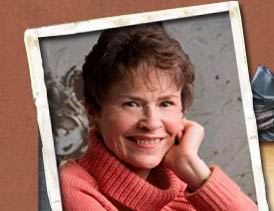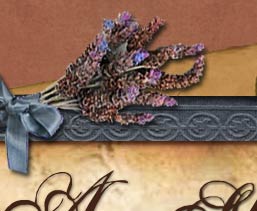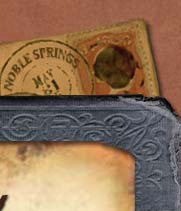Tuesday, December 21, 2010
Cream cheese fudge
Wednesday, December 15, 2010
LESS THAN DEAD, by Tim Downs

Monday, November 29, 2010
THE PREACHER'S BRIDE, by Jody Hedlund

Friday, November 12, 2010
MORE THAN WORDS, by Judith Miller

Thursday, November 4, 2010
WRITERS [ON WRITING], Collected Essays from The New York Times

Wednesday, October 27, 2010
IN EVERY HEARTBEAT, by Kim Vogel Sawyer

In Every Heartbeat explores the lives of three best friends who grew up in the same orphanage and have been granted scholarships to the same college. Libby Conley’s heart’s desire is to become a journalist. The other two orphans, Pete Leidig and Bennett Martin, have conflicting plans. Pete has always dreamed of being a pastor, while all Bennett wants to do is belong somewhere—no matter what the cost.
During the course of her goal to excel at journalism, Libby makes a shocking discovery that threatens Pete’s ambitions. This discovery sends each of the three friends down unexpected paths. The twists the story takes from this point will keep the reader engrossed.
In Every Heartbeat examines the hurts that Libby, Pete and Bennett carry within that propel them toward their diverse goals. The novel is set just prior to World War One, and Sawyer adds excellent detail to make the time period come alive. Fans of Sawyer’s historical fiction will fall in love with In Every Heartbeat.
I love the cover picture! If you’ve already read this book, I’d love to hear from you with your thoughts on the story.
(My thanks to Bethany House for providing my review copy.)
Tuesday, October 19, 2010
CHOOSING TO SEE, by Mary Beth Chapman with Ellen Vaughn

Subtitled, "A Journey of Struggle and Hope," Choosing to SEE is Mary Beth Chapman's story of her life. When I first received the book, I expected it to be about the Chapman family's tragic loss of their daughter Maria in 2008.
Choosing to SEE is that, but it's so much more. Mary Beth begins her story with her growing-up years. She tells of her life in candid fashion, which makes her a real person rather than merely the wife of a Christian music artist. Her personal struggles will strike a chord with many readers.
The driving force behind Choosing to SEE is her honesty. As she says more than once, her life is nothing like what she had planned. She introduces the reader to her husband, Steven Curtis Chapman, as a young man struggling with career choices, and her own struggles learning to be a wife. The book details the births of their children, then goes on to share what first interested them in adopting children from China.
The book turns from narrative to short personal reflections in the second half. Mary Beth strives to make sense of what has happened in her family, sharing thoughts and feelings with which many who have lost a loved one will identify. As she grows in her understanding of God's ways, her words bring hope to her readers. Choosing to SEE is a profound story of one woman's search for God in the midst of darkness. You will finish the book feeling you've had a glimpse into her soul.
Monday, October 11, 2010
LADY IN WAITING, by Susan Meissner

Monday, September 27, 2010
TOUCHING THE CLOUDS, by Bonnie Leon

Tuesday, September 14, 2010
RIVER RISING, by Athol Dickson

Thursday, September 2, 2010
A CLAIM OF HER OWN, by Stephanie Grace Whitson

Sunday, August 22, 2010
THE DOGFATHER, by Susan Conant

Saturday, August 14, 2010
A HOPEFUL HEART, by Kim Vogel Sawyer

Friday, July 16, 2010
THIRTEEN MOONS, by Charles Frazier

Tuesday, July 6, 2010
INTERVIEW WITH DEBORAH VOGTS



 showing me her queen items—which again, leant authenticity to my story.
showing me her queen items—which again, leant authenticity to my story. Monday, July 5, 2010
SEEDS OF SUMMER, by Deborah Vogts

Thursday, June 24, 2010
VANISH, by Tom Pawlik

Friday, June 18, 2010
SCATTERED PETALS, by Amanda Cabot

Wednesday, May 19, 2010
SEEING THINGS, by Patti Hill

In Seeing Things, Patti Hill has crafted a memorable novel about multi-generational family issues. The plot centers around seventy-something Birdie Wainwright, an independent woman whose active life is curtailed by the onset of macular degeneration.
When she breaks an ankle due to her faulty vision, Birdie is forced to stay with her son and his ever-so-uptight wife. The bright side to her situation is her grandson, Fletcher, who rapidly becomes her ally in a cold and sterile household.
The back cover description made the story sound like a humorous romp, but I found it to be anything but. The family situations portrayed struck me as painfully real. My heart ached for poor Fletcher, and for Birdie, as she tries to bring love into a family at odds with one another.
On that level, Seeing Things is a compelling story. However, when Hill brought Birdie's hallucinations of Huckleberry Finn into the mix, I had a little trouble relating. I found myself skipping over the Huck portions to read the "real" story. Having said that, though, I’d still recommend Seeing Things. It contains one of the best family dramas I've read in a long time.
I'd love to hear from other readers as to their opinions about the "Huck parts." –Maybe it’s just me.
Friday, May 7, 2010
HUNTER'S MOON, by Don Hoesel

Sunday, April 25, 2010
LOVING FRANK, by Nancy Horan

Monday, April 19, 2010
SIXTEEN BRIDES, by Stephanie Grace Whitson

Tuesday, April 6, 2010
A DISTANT MELODY, by Sarah Sundin

Wednesday, March 31, 2010
Newsletter Contest
Sunday, March 28, 2010
WINTER HAVEN, by Athol Dickson

Sunday, March 14, 2010
So Brave, Young, and Handsome, by Leif Enger

Saturday, February 27, 2010
THE SILENT GOVERNESS, by Julie Klassen

Monday, February 15, 2010
MEANDER SCAR, by Lisa J. Lickel

Monday, February 8, 2010
TEA TIME FOR THE TRADITIONALLY BUILT, By Alexander McCall Smith

Thursday, January 28, 2010
The Choice, by Suzanne Woods Fisher

Friday, January 22, 2010
Family Baggage, by Monica McInerney













